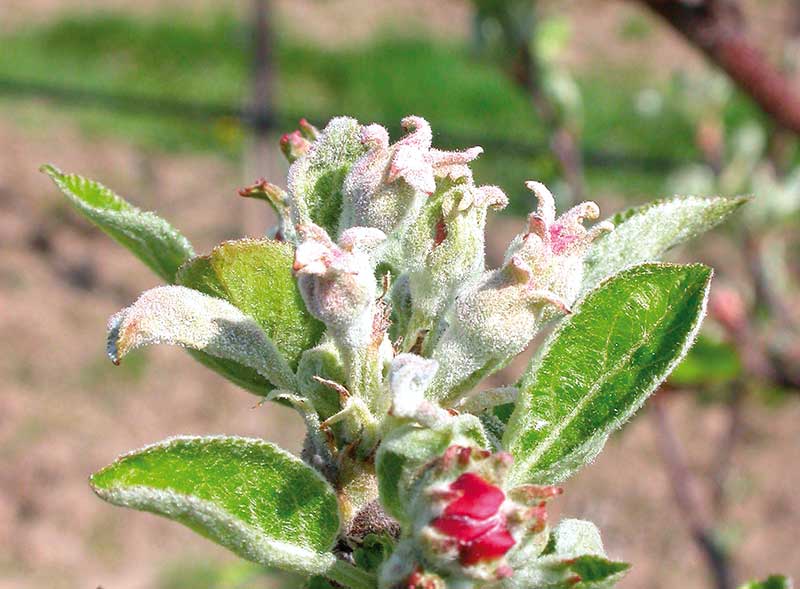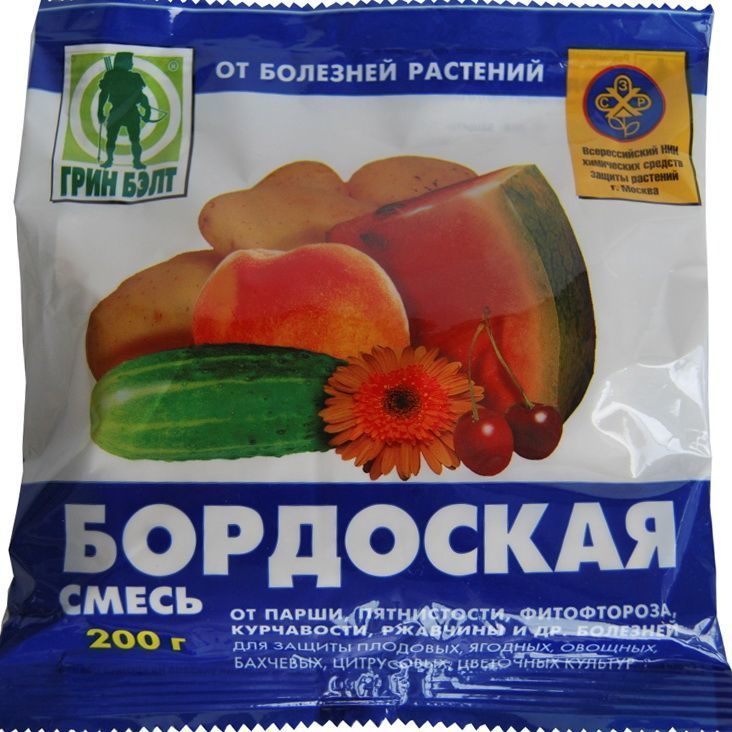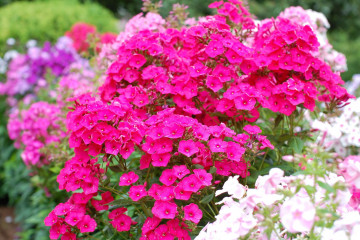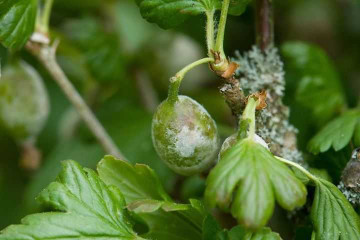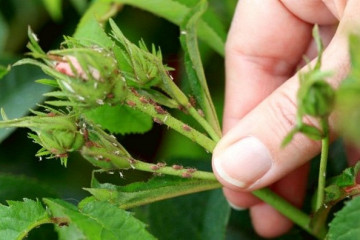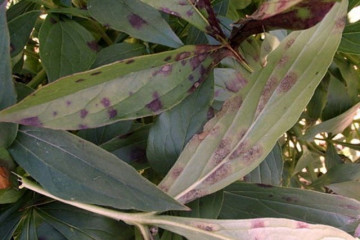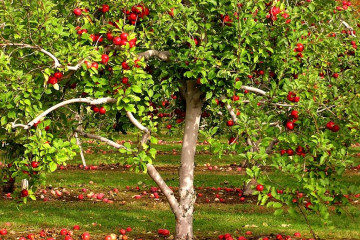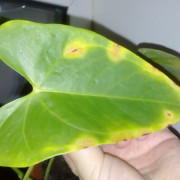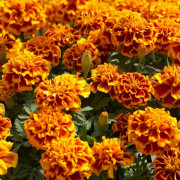Powdery mildew on an apple tree - how to fight and remedies
Content:
Powdery mildew on an apple tree is a common fungal disease that can quickly destroy a plant without timely treatment. Popularly, the disease is called ashes or linen because of its main symptom - white bloom. Powdery mildew is difficult to eliminate, so it cannot be started.
Powdery mildew: a description of the disease, the causes of its occurrence
Powdery mildew is a parasitic fungus that infects most garden crops. Its name in Latin is Erysiphales. The main reason for the appearance of fungus on apple trees is improper tree care and certain weather conditions. The parasite affects mainly young shoots, gradually moving to older trees with reduced immunity.
Factors and causes that provoke the appearance of powdery mildew:
- Incorrectly selected fertilizers. Because of this, the apple tree is deficient in some minerals and an excess in others.
- Overgrown gardens.
- High concentration of nitrogen in the soil.
- A sudden drop in temperature, causing the tree to freeze.
- Prolonged spring cooling during the growing season in plants.
Stages of development of a fungal disease and its features:
- Infection on young shoots manifests itself immediately after the end of flowering of the tree and lasts until the end of the growing season.
- The incubation period from the moment of infection until the leaves turn white is from 4 to 10 days. Depends on the weather and the general condition of the plant. On young or weakened trees, symptoms may appear several days after infection.
- High humidity and temperature + 18 ... + 25 degrees is a favorable environment for the development of the fungus, accelerating its spread.
- From the second half of summer, the plaque on the leaves is covered with a rough crust, spherical black formations are formed.
- The fungus hibernates in the buds of fruits and shoots of foliage, which are located on the tops of young branches.
Signs of powdery mildew - white bloom and other manifestations
Description of the main manifestations of powdery mildew:
- The leaves take on a lanceolate shape. Their structure becomes rough, they curl around the edges. The color of the foliage changes from green to reddish, after which they dry up and fall off.
- Necrosis of the tops of young shoots.
- The crown becomes more dense, which makes it difficult for sunlight to penetrate the tree. The rate of development and spread of the fungus is increasing.
The main manifestation of the disease and its distinguishing feature is a sticky white coating on the leaves of the apple tree. At first, the foliage turns white, and as the fungus develops, it acquires a brown color with multiple dark dots.
Ways to combat powdery mildew on an apple tree
The appearance of a white bloom on an apple tree is a sign, upon the appearance of which the gardener must take immediate measures to destroy the fungus. If the disease is started, there is little chance of saving the tree. In the early stages of infection, folk recipes can help. If the disease is spreading rapidly, only chemicals will help.
Chemical agents
Rules for the use of fungicides:
- Before spraying the tree, it is necessary to remove the leaves and shoots damaged by the fungus.
- Fungicides are used during the budding period, before the color appears, and immediately after the tree has faded.
- The number of treatments - from 5 to 6 times during the period from the beginning of spring to the first days of autumn, with an interval of 1 - 1.5 weeks. If the fungus is at an early stage, several sprays can be dispensed with.
Bordeaux liquid
This is the most common fungicide. Components: copper - destroys fungal spores, hydrated lime - protects foliage. To get rid of the fungus, you will need 3 packages of the chemical per 10 liters of water, for prevention - 1 package per 10 liters.
Colloidal sulfur
It is a contact fungicide with sulfur as the main component. In addition to powdery mildew, it helps in pest control. If the tree is heavily infested, the contact agent must be combined with systemic chemicals.
Topaz
Systemic fungicide. Used every 4-5 days. The advantage of the drug is that it is not afraid of rain. Complete absorption into the pores occurs within half an hour. The first effect, which is the death of fungal spores, occurs after 3 hours.
HOM
One-component preparation based on copper oxychloride. It is divorced and used according to the instructions.
Quadris
The principle of action of this drug is to block the access of oxygen to the fungus, which is why it dies. The agent takes effect 1 hour after spraying the tree.
Biological preparations
If the disease has not spread much, biological agents can be used instead of chemicals. The following drugs are most effective:
- Baikal M is based on living bacteria that feed on the spores of the pathogenic fungus. 10 ml of the drug is diluted in 10 liters of water.
- Fitosporin - in the composition of living spores and cells. Divorced according to the instructions, applied once every 14 days.
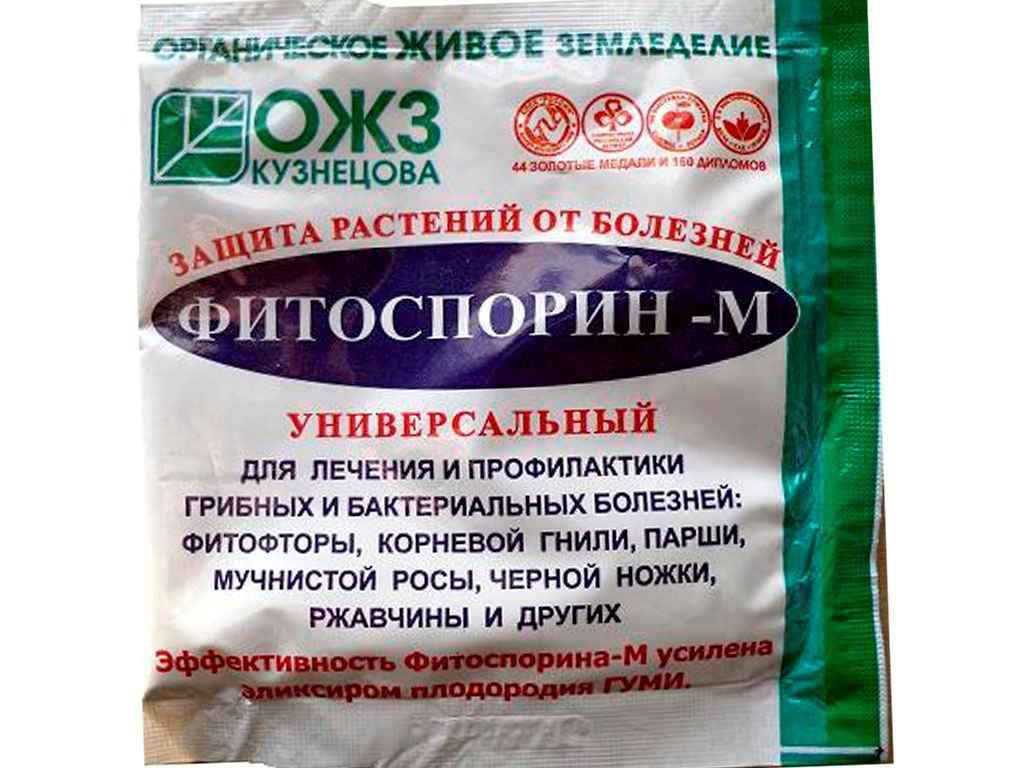
Phytosporin is preferred, since it can be treated with trees in any weather, even under conditions of high humidity.
Folk remedies
Recipes based on natural ingredients and products are used as a preventive measure. Powdery mildew can be treated with them only if a gray bloom has appeared on single leaves of the apple tree, and the disease has not had time to spread. Recommended solutions:
- 1 part whey is mixed with 10 parts water. The solution helps to shut off oxygen to the fungus, and it dies off.
- Stir 2 tbsp in 1 bucket of water. l. mustard powder. Regular spraying is carried out.
- 100 g of crushed laundry soap is diluted with 10 liters of water heated at 50 degrees, add 2 tbsp. l. soda. Stir until the components are completely dissolved in water.You can use the liquid only after cooling down.
- Copper sulfate (200 g) is dissolved in 0.5 l of water, ammonia (70 g) and soda (100 g) are added. Stir, add water to make a volume of 2 liters. Before use, the finished concentrate in the amount of 200 ml must be diluted in 1 bucket of water.
Is it possible to save a seedling
To save an apple tree sapling from powdery mildew will only help the correct agricultural technology:
- When buying fruit trees, it is necessary to choose only healthy specimens, with a well-developed root system, without signs of any damage.
- Regular crown thinning.
- Maintaining an optimal moisture level in the garden, avoiding stagnation of water in the soil around the tree.
- Timely collection and burning of fallen leaves, branches and fruits, which may contain spores of the fungus.
- Regular inspection of trees for early detection of signs of disease.
- The right choice of fertilizers.

Compliance with agricultural technology and garden maintenance is a guarantee of the absence of fungal diseases
Powdery Mildew Resistant Varieties
In regions with a humid climate, where trees are susceptible to fungal infection, it is recommended to plant those varieties of apple trees that are highly resistant to powdery mildew. These varieties include:
- Napoleon;
- Titovka;
- The rajka is red;
- Bessemyanka Michurin.
But even if the variety has a high resistance to fungus, the likelihood of infection with improper care remains. Therefore, it is important to follow the correct farming practices and keep an eye on the garden.
Disease prevention measures
It is difficult to deal with powdery mildew, since the disease can constantly recur. Every gardener should know what to do to prevent the occurrence of fungus. Main measures:
- compliance with agricultural practices;
- preventive pruning of sick, weak shoots;
- timely collection of fallen leaves and branches;
- during the ripening period of fruits - the introduction of fertilizers with potassium and phosphorus in the composition;
- selection of varieties resistant to powdery mildew;
- the right choice of a tree planting site - in a lighted area without drafts and stagnant water.
Powdery mildew is a fungal disease that negatively affects the condition of the tree and leads to a significant decrease in yield. Its main feature is a bloom of white on foliage. If this symptom is found, it is necessary to immediately start spraying the tree with fungicides or prepared solutions, otherwise you may not have time to save the apple tree.


